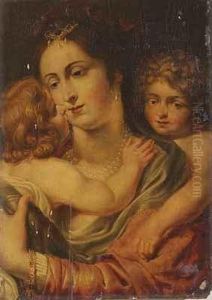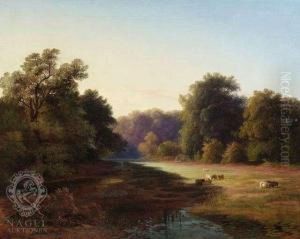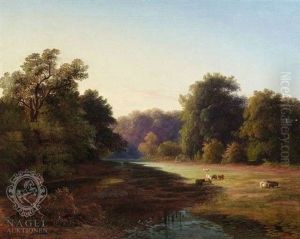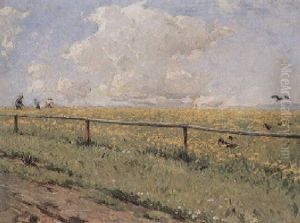Hans Pock Paintings
Hans Pock, an artist whose life and career unfolded during the transition from the Late Gothic to the Early Renaissance periods in European art, made his mark primarily in the German-speaking regions of Europe. Born in 1440, Pock's contributions to the art world were significant during a time when the artistic landscape was undergoing profound changes. His oeuvre, though not as widely recognized today as some of his contemporaries, played a notable role in the evolution of artistic styles and techniques of his time.
Pock's early life is shrouded in some mystery, as is common with many artists from this period, due to the scarcity of records. However, it is believed he received his artistic training in one of the prominent workshops of the time, possibly in southern Germany or Austria. This training would have exposed him to the prevailing Gothic traditions, as well as the burgeoning influences of the Italian Renaissance, which were beginning to permeate northern Europe.
Throughout his career, Hans Pock was known for his work in a variety of mediums, including painting, sculpture, and possibly stained glass, though the specifics of his oeuvre can sometimes be difficult to ascertain due to the common practice of not signing works during this era. His style evolved over his career, reflecting the transition from the more rigid and hierarchical compositions characteristic of the Gothic, to the more naturalistic and human-centric focus of the Renaissance.
Pock's religious works, particularly his altarpieces, are among his most celebrated contributions. These pieces often featured intricate detail and a depth of emotion that was innovative for the time. He was also noted for his portrait work, which captured the individuality and complexity of his subjects in a manner that foreshadowed the later developments of Renaissance portraiture.
Despite his contributions to the art world, Hans Pock did not achieve the lasting fame of some of his contemporaries. He died in 1519, leaving behind a body of work that, while influential in its time, has been somewhat overshadowed in the annals of art history. Nonetheless, his work provides valuable insight into the transitional period of European art, reflecting both the enduring legacy of the Gothic tradition and the transformative influence of the Renaissance.



